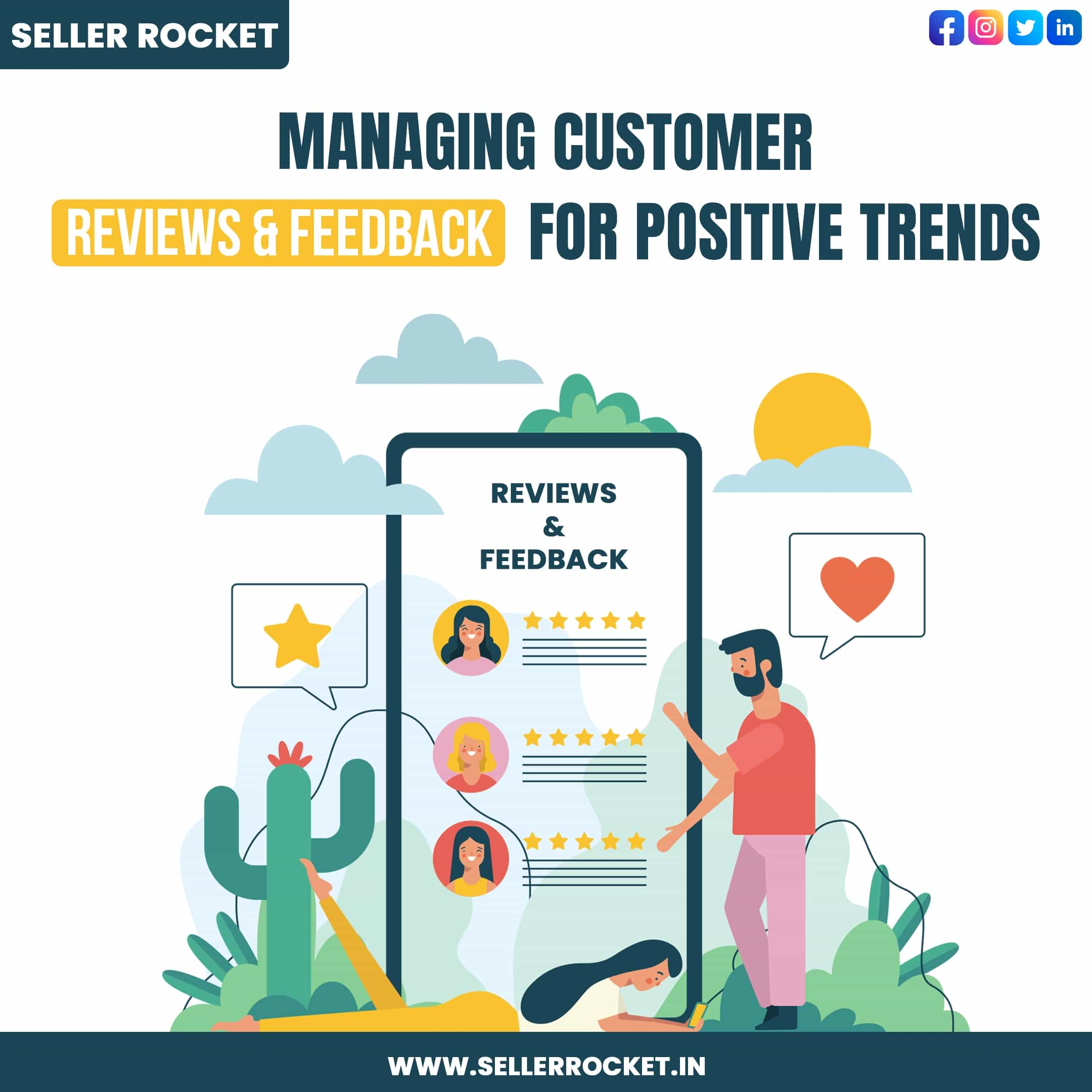MANAGING CUSTOMER REVIEWS AND FEEDBACK FOR POSITIVE TRENDS IN 2023
In today's digitally-driven world, customer reviews and feedback hold significant power. They act as social proof, guiding potential customers towards making informed purchasing decisions. As we enter 2023, it's crucial for businesses to navigate customer reviews effectively, harnessing their potential to propel positive trends
In 2023, there are a number of new trends in customer reviews and feedback that businesses should be aware of.
1. Collect Customer Feedback from Multiple Channels
In addition to collecting reviews on your website and social media pages, businesses should also collect feedback from customers through email, surveys, and live chat. This will give businesses a more comprehensive view of customer sentiment and identify areas for improvement.
Email: Businesses can send out surveys or questionnaires to customers after they have made a purchase or used their service. This is a great way to get feedback on specific products or services. For example, a clothing retailer could send out a survey to customers who have purchased a new dress to get feedback on the fit, quality, and overall satisfaction.
Surveys: Businesses can create surveys to collect feedback on a variety of topics, such as customer satisfaction, product quality, and customer service. For example, a restaurant could create a survey to ask customers about their dining experience, including the food, service, and atmosphere.
Live chat: Businesses can use live chat to interact with customers in real time and get feedback on their experience. This is a great way to resolve problems quickly and get feedback on how to improve their customer service. For example, an online retailer could use live chat to help customers with their orders or answer questions about products
2. Respond to Customer Feedback Promptly and Professionally
When a customer takes the time to leave a review, it is important for businesses to respond promptly and professionally. This shows that businesses value their customers' feedback and are committed to resolving any issues they may have.
Acknowledge the customer's feedback: Businesses should let customers know that they appreciate their feedback and that they are taking it seriously. For example, a business could respond to a negative review by saying something like, "We're sorry to hear that you had a negative experience with our product. We take customer feedback very seriously and we're always looking for ways to improve. We would appreciate it if you could provide us with more details about your experience so that we can investigate further.
Apologize for any inconvenience or problems: If the customer has had a negative experience, businesses should apologize for any inconvenience or problems that they have encountered. For example, a business could apologize for a delayed shipment by saying something like, "We apologize for the delay in shipping your order. We're experiencing some unexpected delays due to the weather, but we're working hard to get your order to you as soon as possible."
Offer a solution to the customer's problem: If the customer has a specific problem, businesses should offer a solution to resolve the issue. For example, a business could offer a refund or a replacement product if a customer is not satisfied with their purchase
Thank the customer for their feedback: Businesses should thank the customer for their feedback and let them know that they value their business. For example, a business could thank a customer for their review by saying something like, "Thank you for taking the time to leave us a review. We appreciate your feedback and we're always looking for ways to improve."
3. Use Customer Feedback to Improve Your Products and Services
Once businesses have collected customer feedback, they should take the time to analyze it and identify areas for improvement. This information can then be used to make changes to businesses' products, services, and customer experience.
Improve the design of your products. Businesses can use customer feedback to improve the design of their products, such as by making them more user-friendly or by adding new features that customers have requested. For example, a clothing retailer could use customer feedback to improve the fit and style of their clothing.
Add new features to your services. Businesses can use customer feedback to add new features to their services, such as by offering 24/7 customer support or by providing more personalized recommendations. For example, an online retailer could use customer feedback to add a live chat feature to their website so that customers can get help with their orders in real time.
Improve your customer service process. Businesses can use customer feedback to improve their customer service process, such as by reducing wait times or by providing more accurate information. For example, a restaurant could use customer feedback to improve their wait times by hiring more staff or by redesigning their dining room.
Personalize the customer experience. Businesses can use customer feedback to personalize the way they interact with customers, such

